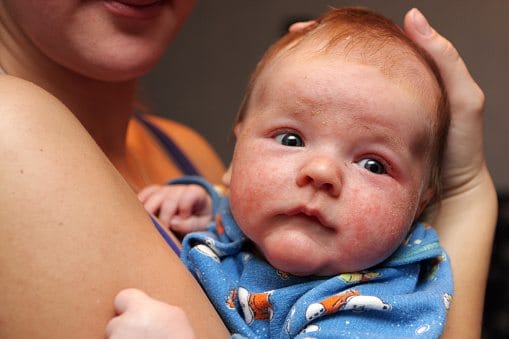On board, it’s the same story: some cabin crews will serve alternative snacks and make a P.A. announcement that there is someone on board with a nut or peanut allergy and ask passengers not eat those foods. But customers often don’t realize that, at most airlines, these are the sympathetic actions of an individual crew, not a policy you can rely on.
During the recent years of a tough economy, large carriers like United and American Airlines also became attached to the prestige value of tree nuts (usually almonds and cashews) to attract the high-paying customers in the first-class section.
“The warm nuts are something we can offer the premium passenger to make the travel experience better and to help differentiate our product,” said American’s spokesman Ed Martelle.
While food allergy consumers need airlines to be overt about their practices regarding peanuts and nuts especially – since they are common snacks and potent allergens – some airline websites offer only a terse allergy policy. Offering consumers adequate online information is helpful – and cost-effective. Case in point, the Greenbergers ended up with a full refund on their seven flights.
***
The idea of reducing the risk of reaction at 35,000 feet often seems like a no-brainer to those living with food allergies. But there are those who strongly object, and not just those who like their nut snacks. From the peanut grower to the big confectioner, there are lobby groups that say there’s no proof that peanuts or nuts in an airline cabin cause severe reactions.
This came up in late 2010, when the U.S. Department of Transportation (DOT) proposed banning the serving of peanuts on planes. DOT backed away from such a ruling because of a law, passed in 1999, that demands a peer-reviewed study that shows “severe reactions by passengers to peanuts as a result of contact with very small airborne peanut particles” before any peanut-restricting edict can be issued. But on a smaller scale, there is, in fact, evidence of risk.
Three studies have examined air travel and found that, based on passengers’ reports, there have been peanut and tree nut reactions. In the University of California study of 471 people known to have severe peanut, nut or seed allergies, almost 10 percent reported experiencing a reaction.
Of significant concern in a 2009 study from the University of Michigan was that one-third of the reactions were consistent with anaphylaxis. Dr. Matthew Greenhawt, an allergist and author of the Michigan research, says that a more rigorous study “would require diligent in-flight assessment of how peanut or tree nut particles may distribute within a pressurized cabin, how different cabin configurations may alter this, and how these dynamics may be affected by different aircraft models.”
That’s tough data to come by, especially since the airlines haven’t been open to that kind of aircraft scrutiny. Greenhawt says that while proof beyond self-reporting is ideal, “the passenger reports continue to pour in and should not be dismissed.” Organizations like FARE (Food Allergy Research & Education) and Allergic Living also receive e-mail accounts of reactions on flights. While most of them are mild, all of them are troubling when at such a distance from a hospital.
Next: Proving “Fitness” to Fly





